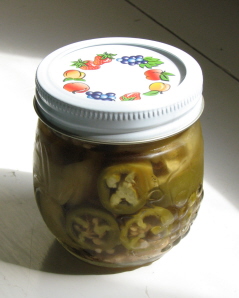Yes, you should follow safety-tested recipes when you’re doing home canning, but don’t let novice canners’ paranoia about botulism discourage you trying this time-honored food preservation method.
Yes, there’s an outside chance you could poison yourself and your loved ones, but let’s put things in perspective.
The Centers for Disease Control and Prevention reported a total of 14 U.S. cases of food-borne botulism poisoning in 2004, a fairly typical number. No one died. In 2005, the number was 18, with two deaths. (Look at the CDC’s botulism surveillance reports for other years.)
By contrast, the CDC estimates 76 million cases of food-borne disease occur each year in the United States, and they result in some 325,000 hospitalizations and 5,200 deaths. Look to campylobacter, salmonella, e-coli O157:H7 and calicivirus as the chief pathogens. You’ll find them mostly in raw animal products, including eggs, and on foods that manure (even in microscopic quantities) might have touched.
Now, those are scary numbers, but you’d probably starve if you avoided all animal products AND food that may have touched manure.
What is more, most of those illnesses could be prevented by simple, safe food preparation: Wash your hands. Wash your food, especially food eaten raw. Cook animal products thoroughly, and use a thermometer to make sure. Put cooked or cut food into the refrigerator promptly. The CDC also recommends “avoiding consumption of unpasteurized milk, raw or undercooked oysters, raw or undercooked eggs, raw or undercooked ground beef, and undercooked poultry.”
By the same token, you need to follow the safety rules when it comes to canning. Yes, botulism can occur, and it can kill, and eating commercially prepared foods is no guarantee of safety, as the recent Castleberry recall attests. But it’s rare and can be avoided by following directions.
I say, if you like to can or want to try, go ahead. Use the USDA Complete Guide to Home Canning, which is free online and includes recipes as well as canning instructions and processing times. Or go with the classic Ball Blue Book of Preserving![]() . (You could probably even cheat. I’ve talked to a lot of canners over the years—including ones who reuse lids and others who use paraffin to seal their jellies—and none of them had killed or sickened anyone. Still, I absolutely recommend following the rules.)
. (You could probably even cheat. I’ve talked to a lot of canners over the years—including ones who reuse lids and others who use paraffin to seal their jellies—and none of them had killed or sickened anyone. Still, I absolutely recommend following the rules.)
Do you eat raw oysters? Rare beef? Raspberries off backyard brambles without washing them first? Then go ahead, you risk-taker, get some jars and start canning!


Exactly! No one should let rookie nerves scare them. Not even me - I’m gonna’ keep doing it, even if I didn’t get it all right this time. And I might even eat some of my badly-canned food… Because I DO eat raw oysters sometimes. I eat sushi plenty. I do eat berries off the brambles, no washing. And seriously, I am DIGGING this whole concept of canning.
Joanne // Aug 30, 2007 at 9:07 am
Hurray for the pro-canning post! I just had a friend ask me about this last night. I will teach her to can soon…!
Janet Majure // Aug 30, 2007 at 1:10 pm
Hey, thanks, Ali and Joanne. Keep on cannin’! As for me, I accept canned donations :) instead of canning—just the idea of all that boiling water on a hot Kansas summer day makes me lightheaded.
Tammi LIen // Aug 6, 2009 at 8:14 am
Can i take tomatoes from a can and can them in jars?
Janet Majure // Aug 6, 2009 at 12:43 pm
Hi, Tammi. Don’t know why you’d want to, but I can’t think of any reason why you could not do so. It would probably be best to follow the same boiling-water bath instructions as if you were canning them for the first time.